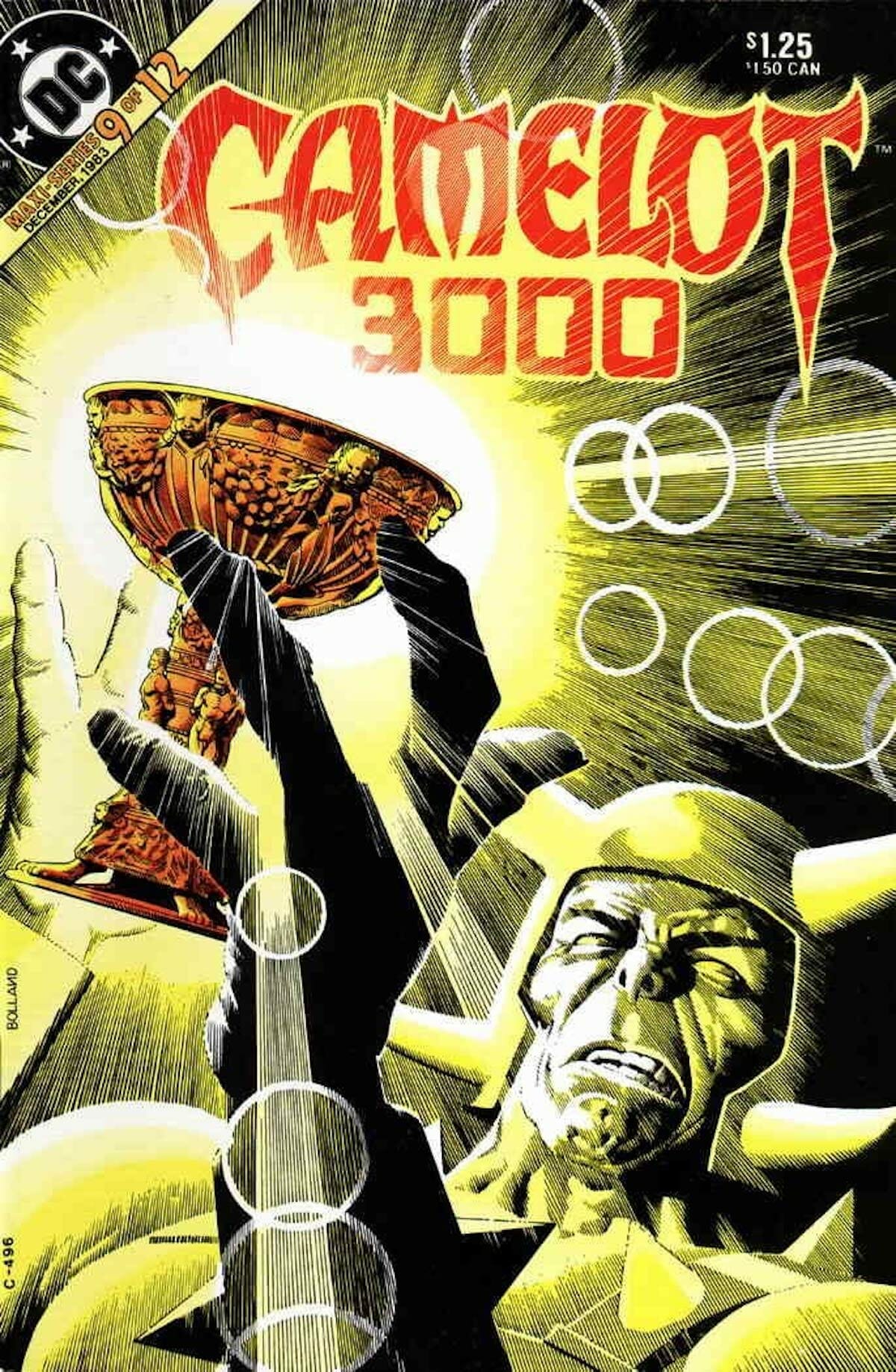To many comics fans — particularly those who are really into DC Comics or the UK’s long-running 2000 AD anthology — there should be no real introduction necessary for artist Brian Bolland. Initially coming to prominence in the UK with the already popular Judge Dredd, before going on to work on some of the most recognizable characters to blaze through DC’s vast history, it’s no understatement to say that Bolland is one of the most stylistically iconic artists working in the comic industry within the past forty years.
Bolland didn’t just jump to the top of the artistic food chain overnight, however. First starting within the industry through small-press work and self-published zines, alongside illustration work for mainstream outlets including Time Out and famed underground paper OZ, Bolland found himself working alongside future Watchmen artist Dave Gibbons on Powerman — a Nigerian comic created in the UK, full of dinosaurs, robots, and other delightfully campy threats, each one drawn with exquisite precision and no small amount of joy.
It was Bolland’s association with Powerman that led to his discovery of 2000 AD, with the same art agent recruiting for both titles. Initially acting as a cover artist for strips such as Dan Dare — drawn at the time by Gibbons, coincidentally — Bolland eventually rose among the ranks to draw the interiors for several Judge Dredd strips, with his first interiors resulting from a last-minute rush to fill a slot created when another artist dropped out at the last minute. Clearly, he passed the unexpected audition, and quickly became a mainstay and fan-favorite on the future cop strip, most famously sharing the duties of interior art with Mike McMahon for the “Cursed Earth” storyline, as well as co-creating the iconic characters of both Judge Anderson and Judge Death.
That’s not to say that Bolland’s artwork was restricted to readers of 2000 AD in the late 1970s; at the same time as his Dredd work, he was also illustrating advertisements for Star Wars toys and other genre-specific material, including a number of ads for comic book stores, each one giving him the chance to indulge his own fandom for superheroes, science fiction and fantasy concepts. His promotional artwork for the first Forbidden Planet store in London remained in use for a number of years, including appearing on official merchandise for the chain.
Now, I don’t know about you, but I love a meet-cute. Few meet-cutes have done as much good for the comics world as that between DC Comics and Bolland, whose partnership blossomed after Bolland offered visiting artist Green Lantern artist Joe Staton a drawing table during his stay in the UK. Good connections make good business, of course, and Staton soon passed on Bolland’s name to the editors at DC who were more than pleased to offer the incredibly talented artist his first big break in the US comics industry.
His first work for the publisher was a Green Lantern cover, but soon his artwork was seen on covers across the entire line, including Mystery in Space and, fulfilling one of his childhood ambitions, two Julius Schwartz-edited issues of Justice League of America.
Bolland was later chosen for DC’s first maxi-series, Camelot 3000, though his relationship with editorial over a request for him not to do his own inks on interior pages lead to a subsequent reputation for having an independent streak. That same streak, however, is what makes some of his most iconic work so incredible — not least of which would be his collaboration with Alan Moore on the seminal Batman story The Killing Joke, which tells one of the many possible origins of the Joker. (Though the colors were originally printed with Watchmen color artist John Higgins’ colors, Bolland used that independent streak for good by recoloring to his own specifications when he book was reprinted.)
Although he has concentrated on primarily cover work in the past few decades, Bolland’s style is nonetheless one of the most recognizable in the industry. With influences including British soap opera strip Carol Day artist David Wright, The Steel Claw’s Jesus Blasco, and The Flash’s Carmine Infantino, the mix of photo-realistic figures alongside bizarre antagonists and truly funky backgrounds come by themselves honestly within the portfolio of Bolland’s work. Another inspiration was Sydney Jordan’s mid-century scifi newspapers strip Jeff Hawke, with Bolland again getting to step into the shoes of an esteemed hero when he was able to ghost some episode of the strip, as requested by Jordan himself.
There’s hardly a sector of the Western nerd world that you can throw a stone at and not hit something that has been worked on — or influenced by — Brian Bolland. His art has graced the covers of some of comics most beloved titles such as Wonder Woman, The Flash, Jack of Fables, Tank Girl, and of course his incredibly psychedelic covers for Grant Morrison’s hit series’ Animal Man and the second and third volumes of The Invisibles, and he has managed to lend himself to almost every major publisher in the US and UK during the span of his career — including Marvel, despite a couple of bad experiences with the publisher early in his career. (An early Hulk cover saw his head replaced by another artist, surprisingly.)
If there is one artist who has set the standard for believing in your work hard enough to never settle for less, it just may be Brian Bolland — and based on just how incredible, awe-inspiring, and seminal his work has continued to be, I think we can all agree he’s had it right all along anyway.






















